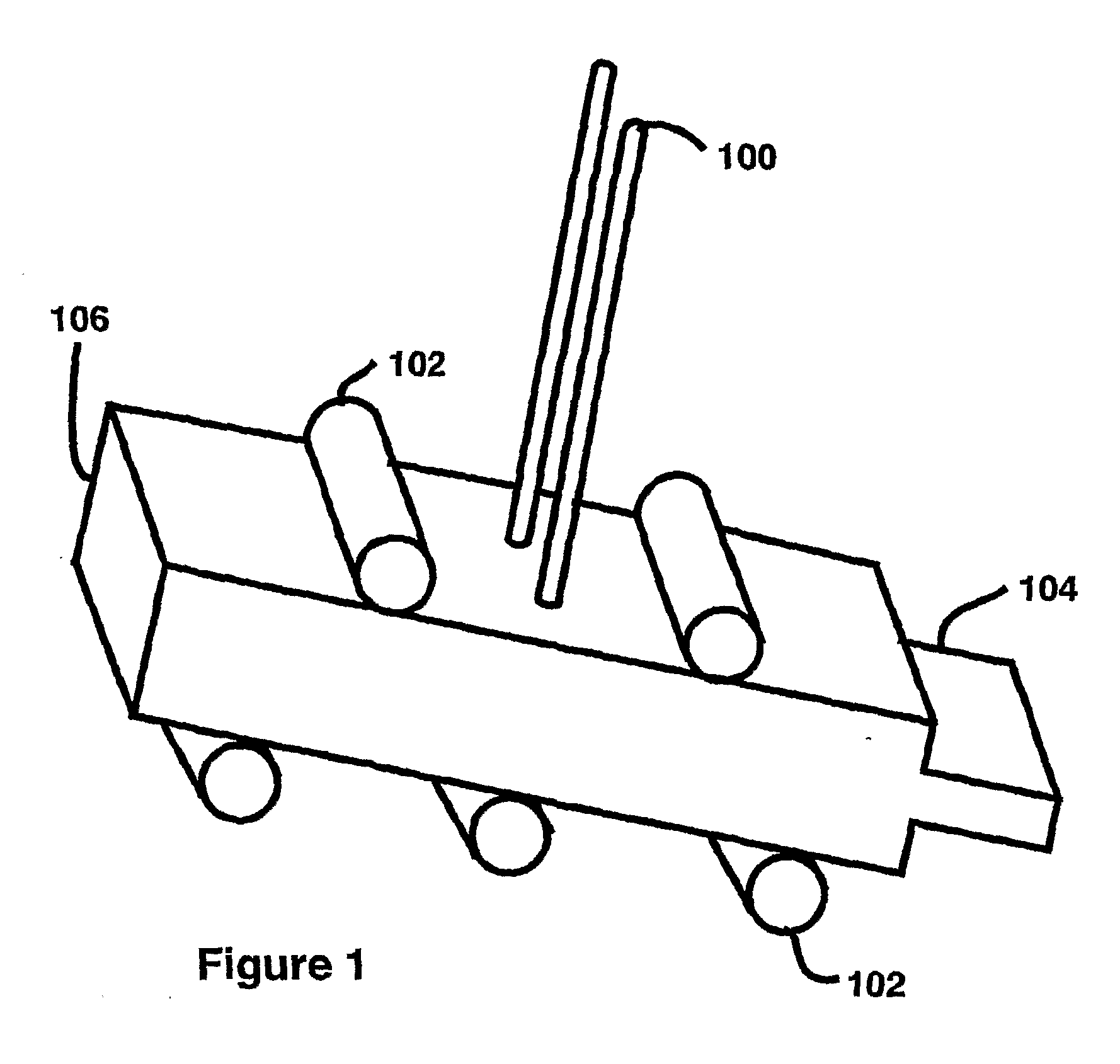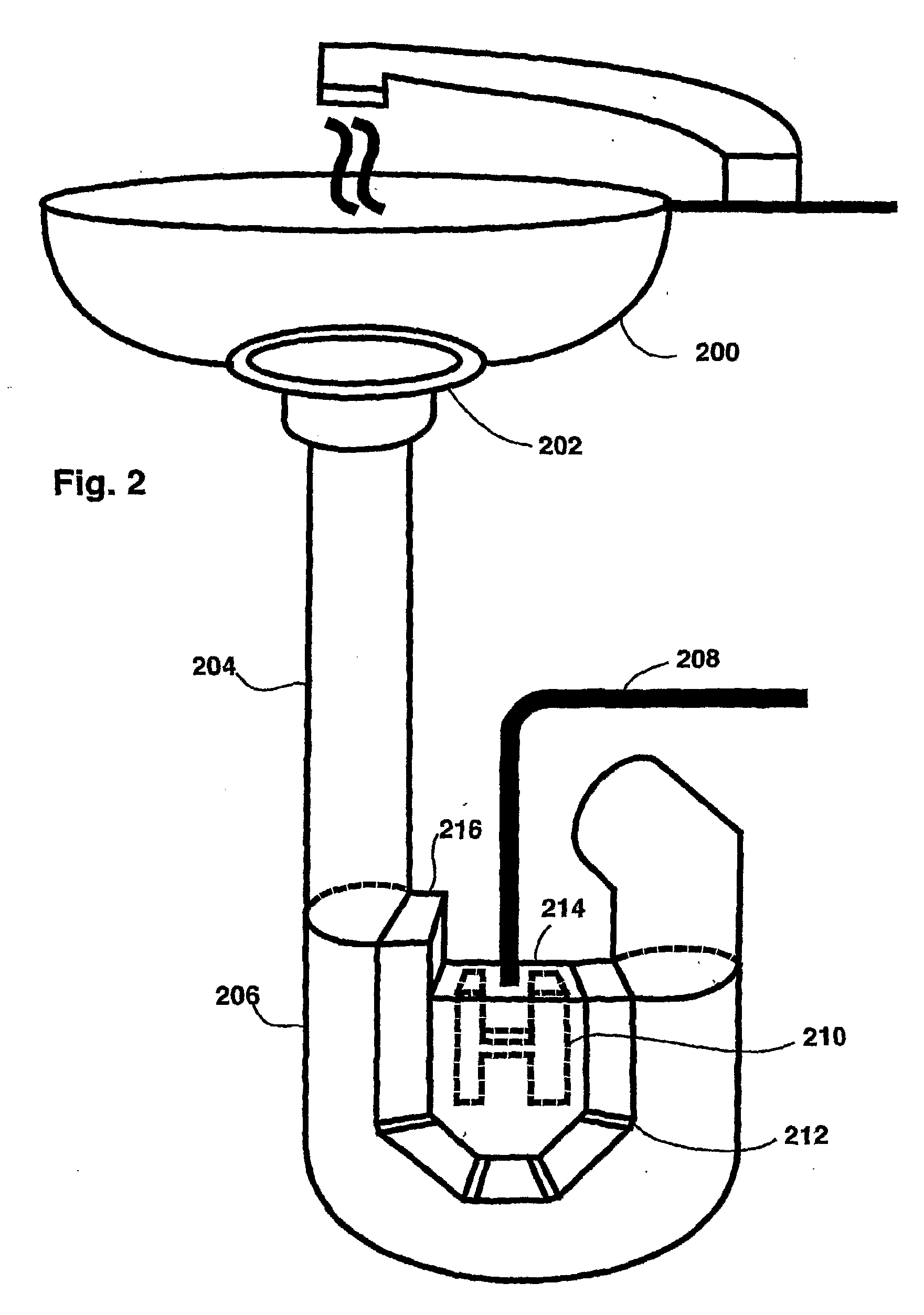Use of Ultraviolet Germicidal Irradiation in Health Care Environments
a technology of health care environment and ultraviolet light, which is applied in the field of use of ultraviolet light germicidal irradiation in health care environment, can solve the problems of limited ability to use ozone, difficult treatment of nosocomial infections, and high mortality of hospital-acquired infections
- Summary
- Abstract
- Description
- Claims
- Application Information
AI Technical Summary
Benefits of technology
Problems solved by technology
Method used
Image
Examples
Embodiment Construction
[0038]FIG. 1 is a perspective view of one possible embodiment of the UV / ozone, ceiling-mounted sterilizer. When the device is mounted within an operating room as by mounts 100, preferably on a ceiling, and the airtight room evacuated of personnel, it is powered on. By providing emission of UV rays from the UV bulbs 102 in conjunction with ozone from the ozone generator 104, the room sterilizer 106 sterilizes the room. The method is superior to UV only sterilization techniques because the production of ozone sterilizes surfaces not in the line of sight of direct or reflected UV rays. Further, the method is used in conjunction with an airtight room, thereby allowing high concentrations of ozone to be generated. After a sufficient period of time has elapsed, the generator may be turned of, such as by an outside the room power switch. Ozone decomposes naturally into harmless components; therefore, after a suitable waiting period, the room is sterilized to at least 99.99% sterility and p...
PUM
| Property | Measurement | Unit |
|---|---|---|
| UV transparent | aaaaa | aaaaa |
| UV radiation | aaaaa | aaaaa |
| excited-energy state | aaaaa | aaaaa |
Abstract
Description
Claims
Application Information
 Login to View More
Login to View More - R&D
- Intellectual Property
- Life Sciences
- Materials
- Tech Scout
- Unparalleled Data Quality
- Higher Quality Content
- 60% Fewer Hallucinations
Browse by: Latest US Patents, China's latest patents, Technical Efficacy Thesaurus, Application Domain, Technology Topic, Popular Technical Reports.
© 2025 PatSnap. All rights reserved.Legal|Privacy policy|Modern Slavery Act Transparency Statement|Sitemap|About US| Contact US: help@patsnap.com



